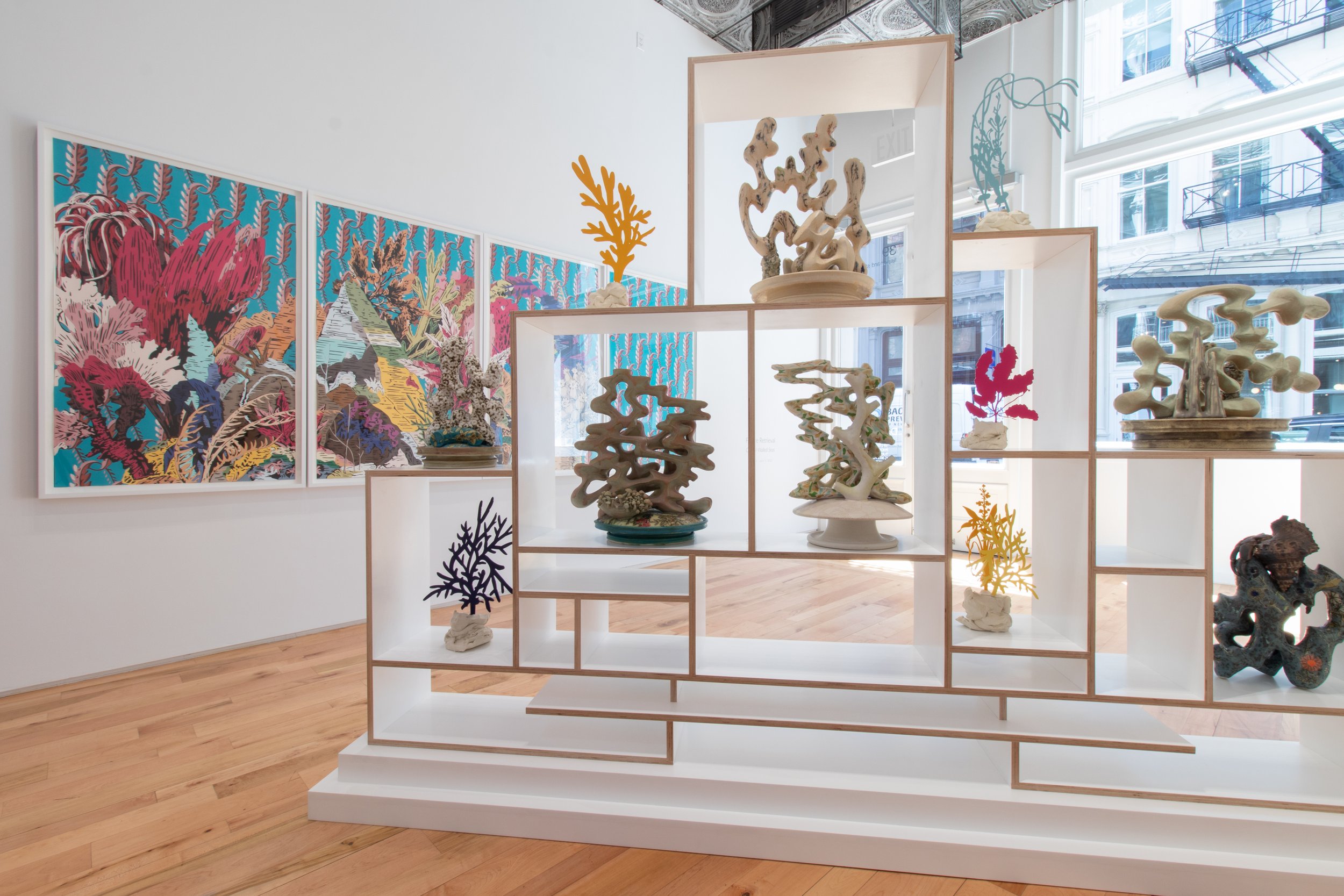
Crystal-Walled Seas, Denny Gallery, 2022
“We have already had our crystal palaces, covering their acres, and filled with objects of art and wealth from every quarter of the globe; it is not impossible, therefore, that we may have crystal-walled seas, in which aquatic menageries will form the last new object of fashion and wonder.”
— Noel Humphreys, Ocean Gardens: The History of the Marine Aquarium, 1857
Denny Gallery is pleased to present Crystal-Walled Seas, a new exhibition by artist duo Future Retrieval. It is their second solo exhibition with the gallery following Permanent Spectacle in 2017. The exhibition will be on view from April 22 to June 4, 2022 at the gallery’s New York location.
Since 2008, Guy Michael Davis and Katie Parker have been collaborating together under the name Future Retrieval, mining archives and museums to digitally collect and make objects that re-examine the history of decorative arts. They work fluently across media in ceramics, weaving, cut paper, and installation, challenging these traditional media to behave differently for our time. Much of the work in Crystal-Walled Seas is based on research they did during their 2019 residency at the Lloyd Library and Museum in Cincinnati, Ohio where they came across seminal texts that trace the history of pattern, decoration and botanical forms across the globe. Their current direction is based on early illustrated instructionals on sustaining aquatic life in a domestic setting. H. Noel Humphries’ 1857 book, Ocean Gardens is a launching point for this body of work with the exhibition title, Crystal Walled Seas, having been taken directly from the text. Through this they have examined not only how to build and populate a successful underwater environment, but how doing so can influence one’s character and feelings towards nature. Aquaria and aquascape have become a metaphor for their new home habitat and studio which is now a closed system or microcosm of individual design.
Regarding their process, Future Retrieval writes, “we begin with drawing, research, discussion, and digital mockups for visualization and proceed with prototypes, collage, and modeling that becomes a control for both experimentation and refinement. We are relatively scheduled and systematic, understanding timing and accounting for successes and loss early in the process. We have the creative flexibility to divide, advance our work, then regroup to have critical discussions, making lists to move the project to the next phase of production and finish, or start again.”
The title, “Crystal-Walled Seas,” from an 1857 text about home aquariums, further resonated with the artists as a concept of world-making and attempting to control the environment within one’s home. The exhibition is full of oceanic, organic formations inspired by the imagery of the aquarium. Paper images illustrate a scenic underwater garden and are also visualized into sculpture. The studio itself has become a self-sustaining microcosm, for example, where two dimensional remnants of cut paper are transformed into three dimensional swim throughs and adaptations, suggestive of living rock. The economics, visuals, and entertainment histories of home aquaria have been of significance for the artists’ research as time and resources have reshaped their practice.
The exhibition came into formation after a period of change in every aspect of the artists’ lives. Prior to 2020, Future Retrieval worked in (and ran) a large ceramics studio at the University of Cincinnati. They had access to cutting edge processes such as three dimensional printing and a porcelain factory in China. In 2020, in addition to the isolation created by the pandemic, they had twin babies and moved to Arizona, where they set up their studio at home. All at once, they lost access to the equipment, peers, and facilities they once had, leading to the work being more handmade and unique than ever before. Using the aquarium as both a material and ideological reference, the gallery becomes an organized interior space for adornment, allowing focus and a moment of stillness for the viewer. Similar to period rooms, vivariums and dioramas, aquaria exist as a contained arena to build a world through the targeted collecting of natural things. The exhibition places the duo’s practice under the microscope whilst mutually finding the material and decorative capabilities within the aquatic world.



















